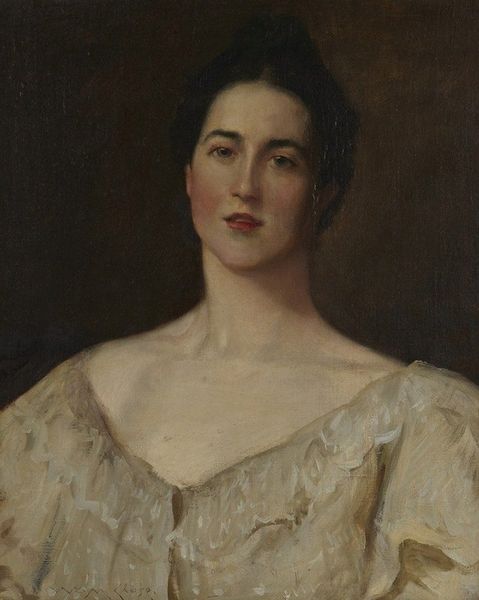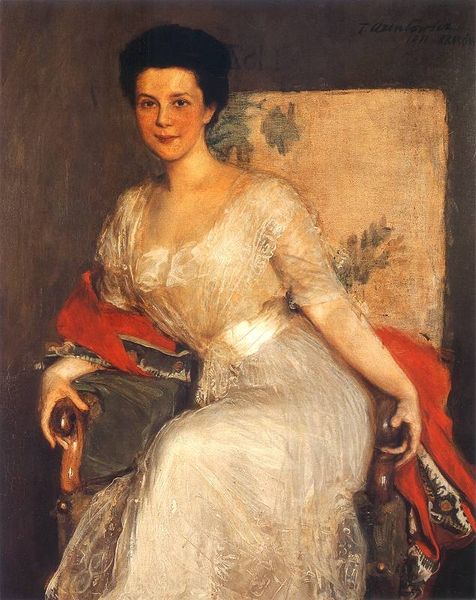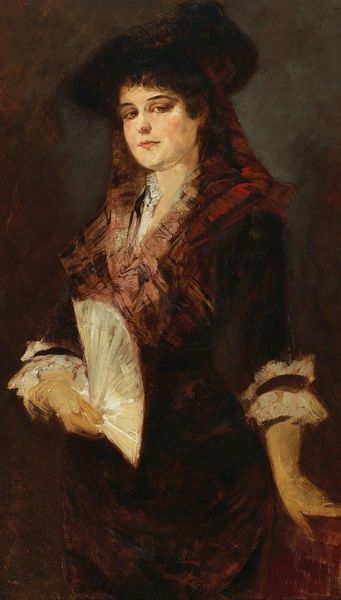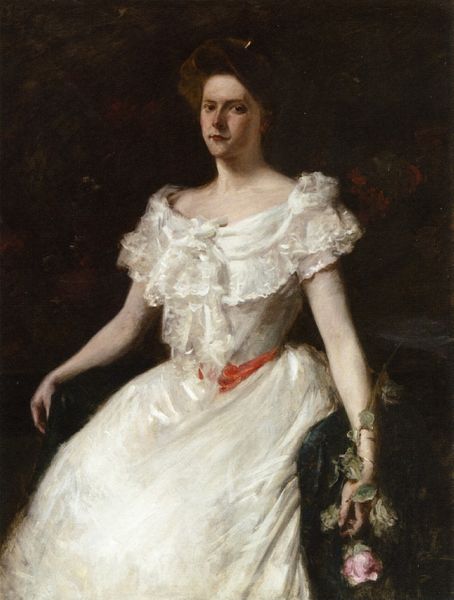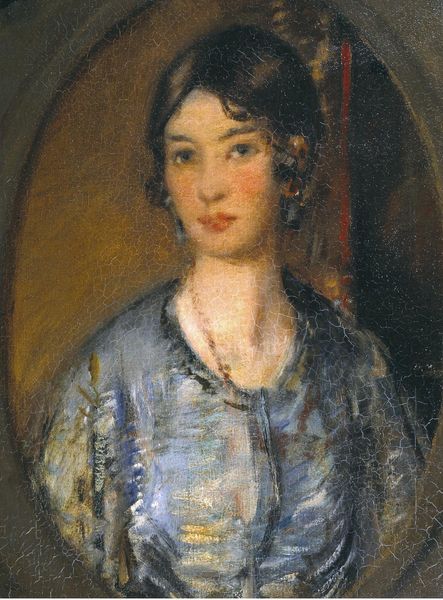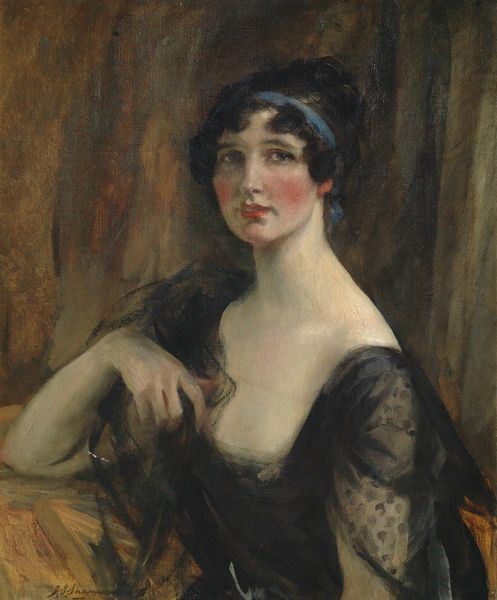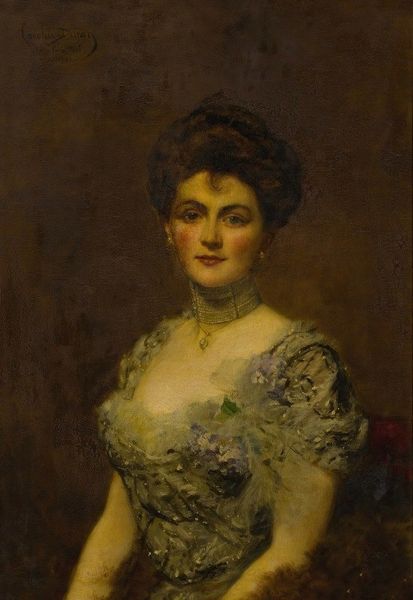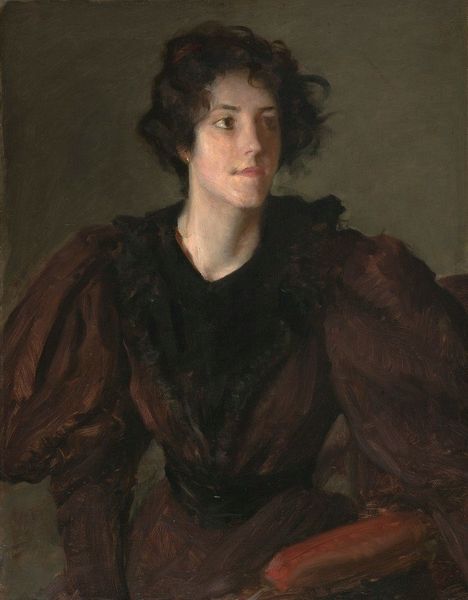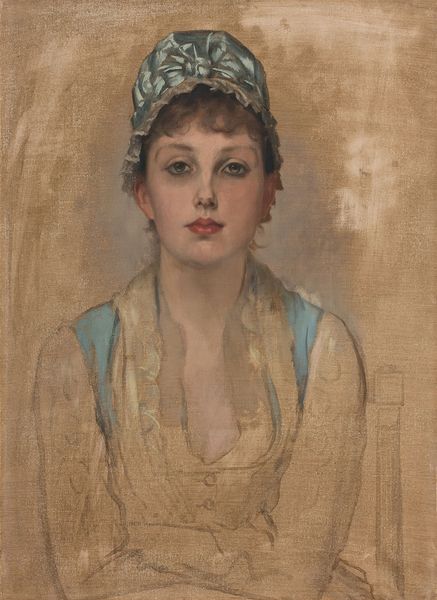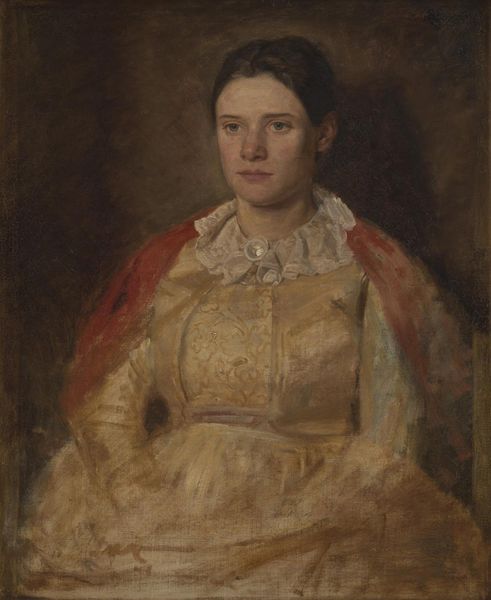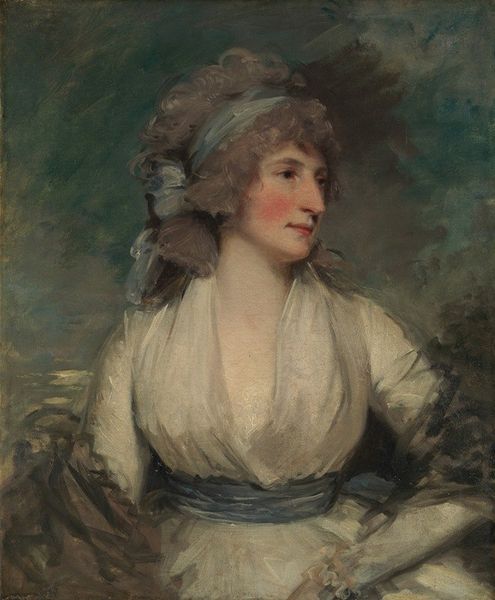
Copyright: Public Domain: Artvee
Curator: Here we have James McNeill Whistler's "The Violin Player," an oil painting dating back to around 1894. I'm immediately struck by its ethereal quality. Editor: Ethereal is right! She seems to emerge from the shadows, like a memory or a melody half-heard. I almost missed the violin at first—it’s so subtle, as if it's simply part of her, another limb. Curator: It's a portrait that defies conventional portraiture. Whistler wasn't after photographic likeness; he was interested in capturing the mood, the feeling of a moment. You know, Whistler called these portraits “harmonies,” and "The Violin Player" certainly has that quality, right? A soft visual harmony. Editor: It's true. I keep looking at the way she's holding the instrument. It's not a performer's grasp. It seems almost like she's holding a child, a very intimate embrace. Is it meant to imply her instrument is almost another being, perhaps her muse or an extension of herself? Curator: Exactly! The violin is symbolic here, certainly not just a prop. Music for Whistler wasn’t just sound; it was an emotional language, the visual equivalent of those harmonic structures. And by depicting the young woman as almost at one with the instrument, Whistler collapses that distance. It all speaks to the fin-de-siècle symbolist ideal. Editor: There's something so wistful in her expression, too. The colors are so muted; a sort of melancholic harmony seems right for the piece. Perhaps, the image serves as a memory that one clutches as time goes by and that may slowly be losing clarity. I’m left wondering who she was and what tune she held inside her heart. It's almost unsettling. Curator: Well, it leaves space for the imagination, doesn’t it? Like the lingering echo of a beautiful, sad song. Editor: Precisely! And the image itself almost haunts, even while being grounded in beauty.
Comments
No comments
Be the first to comment and join the conversation on the ultimate creative platform.
